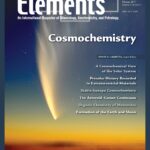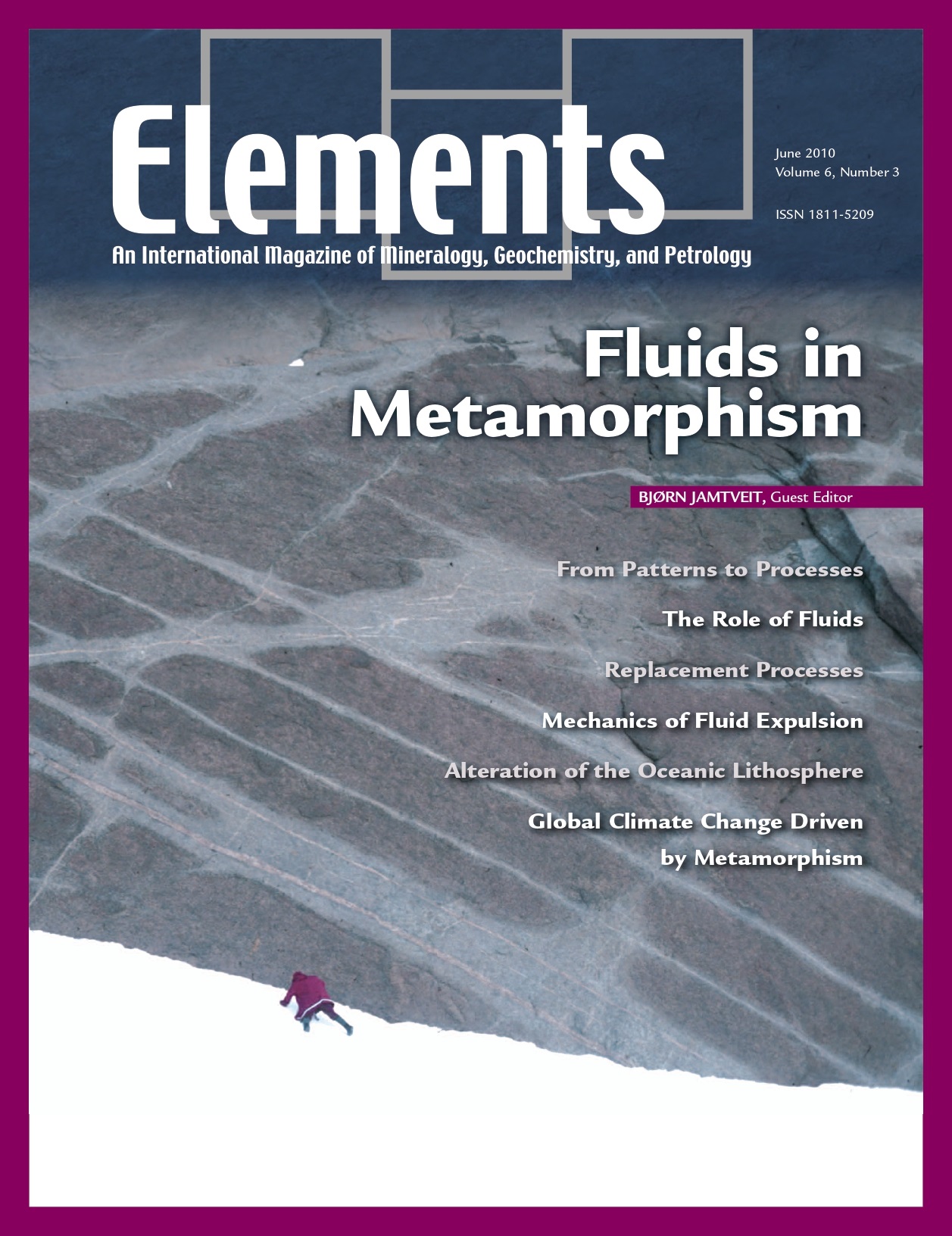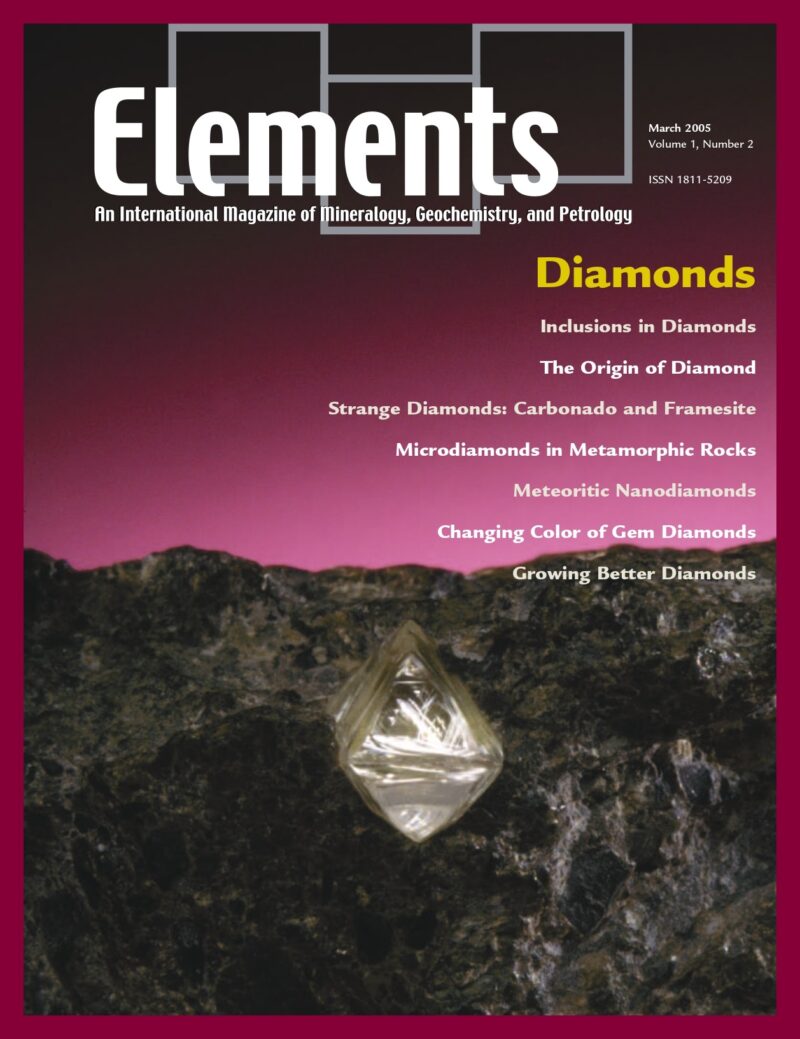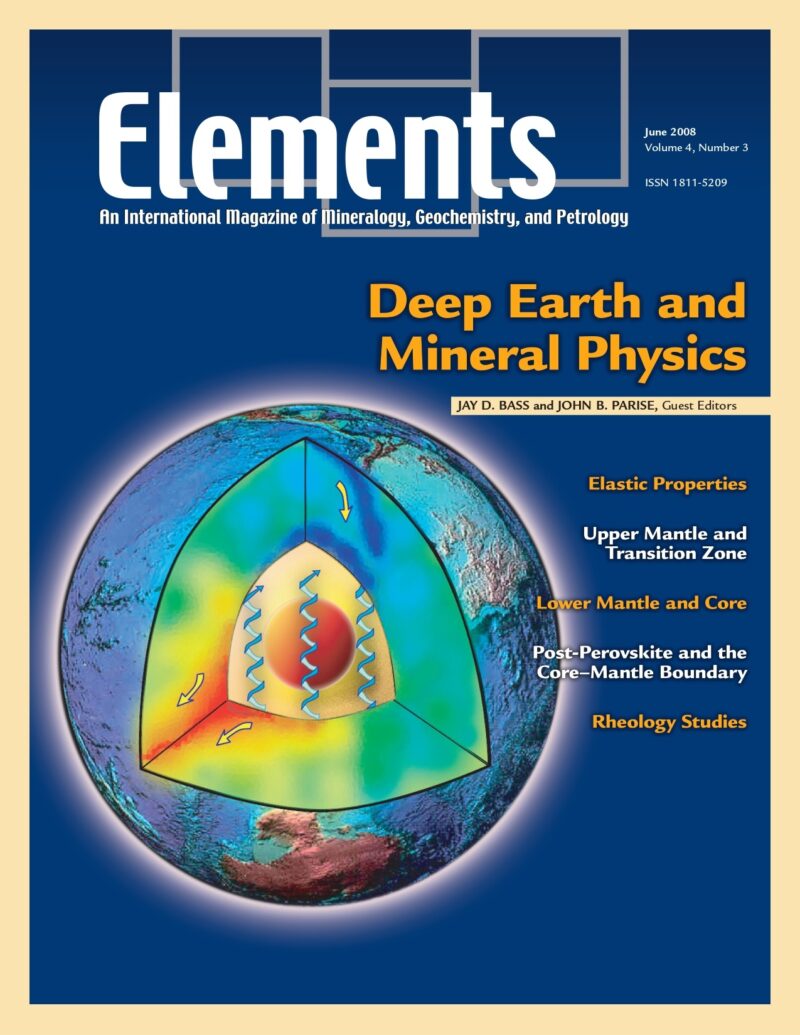
Bentonites – Versatile Clays, April 2009, Vol. 5, No. 2
June 28, 2024
Cosmochemistry, February 2011, Vol. 7, No. 1
June 28, 2024Fluids In Metamorphism, June 2010, Vol. 6, No. 3
$20.00
Fluids play a critical role during metamorphic processes. They have first-order influence on both reaction kinetics and mass transfer, and thus also on the rate of metamorphism.
Fluids In Metamorphism
June 2010, Vol. 6, No. 3
Fluids play a critical role during metamorphic processes. They have first-order influence on both reaction kinetics and mass transfer, and thus also on the rate of metamorphism. “Volatile components,” such as H2O and CO2, may strongly influence rock rheology even in the absence of a free fluid phase. Metamorphic fluids therefore control the coupling between chemical reactions, mass transport, and deformation. Microstructures, compositional gradients at various scales, and larger-scale deformation features all reflect the dynamics of fluid–rock interactions. Moreover, the migration of fluids produced during prograde metamorphic processes or consumed during retrogression links metamorphism with the hydrosphere, the atmosphere, and the biosphere. This issue sheds light on the origin of the various patterns that emerge in metamorphic rocks as a response to changes in pressure, temperature, and the composition of pore-filling fluid. By following the metamorphic fluids to or from the Earth’s surface, we also aim to explain how metamorphism may affect our own environment.
Why You’ll Love Elements Magazine:
- Expert Contributors: Articles written by renowned researchers in the field of geoscience.
- Engaging Content: Join a community of readers who are passionate about Elements.
- Exceptional Quality: Each issue is printed on high-quality paper with stunning visuals and detailed illustrations that bring complex scientific concepts to life.
Order your copy of the June 2010 issue of Elements magazine today and find out about fluids in metamorphism.
Related products
-
Diamonds, March 2005, Vol. 1, No. 2
$20.00Diamond, the fascinating ultrahard mineral, is the focus of considerable interest and scientific research. Recent advances particularly relevant to geoscientists include: diamond as a recorder of Earth processes from the perspective of inclusions, chemistry, and conditions of formation; synthesis for research applications and processing to modify color and physical properties, important to diamond gems and anvils; the implications of nanodiamonds from meteorites.
-
Deep Earth And Mineral Physics, June 2008, Vol. 4, No. 3
$20.00The field of high-pressure mineral physics is central to our understanding of the Earth’s interior and its evolution. It is also a field that is rapidly advancing.
-
On The Cutting Edge: Teaching Mineralogy, Petrology, And Geochemistry, April 2007, Vol. 3, No. 2
$20.00New advances in research on learning have important implications for teaching mineralogy, petrology, and geochemistry. Effective instructional practices are increasingly student centered, address diverse student learning styles, and employ a variety of active-learning strategies.




